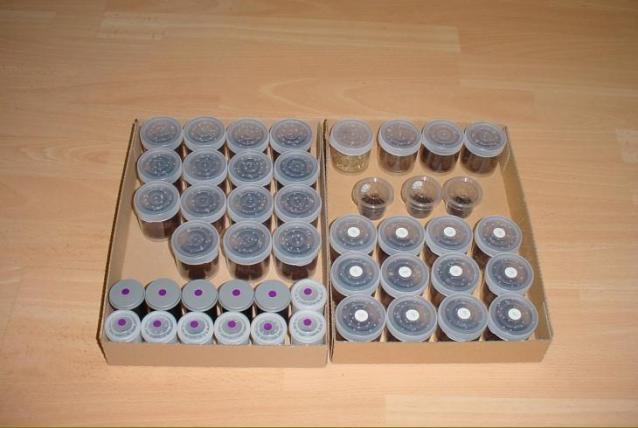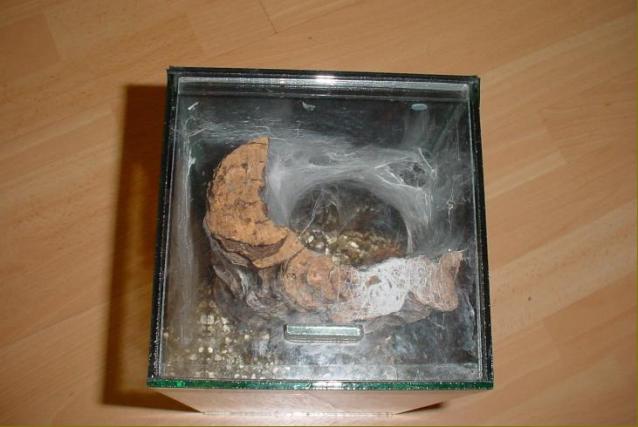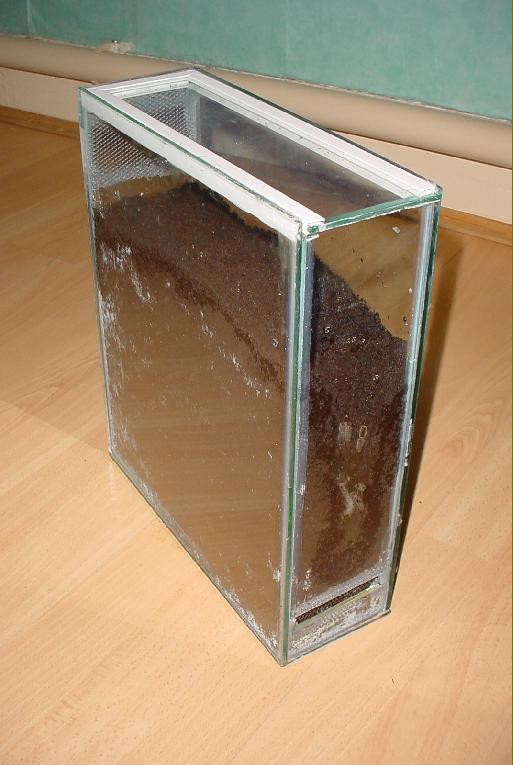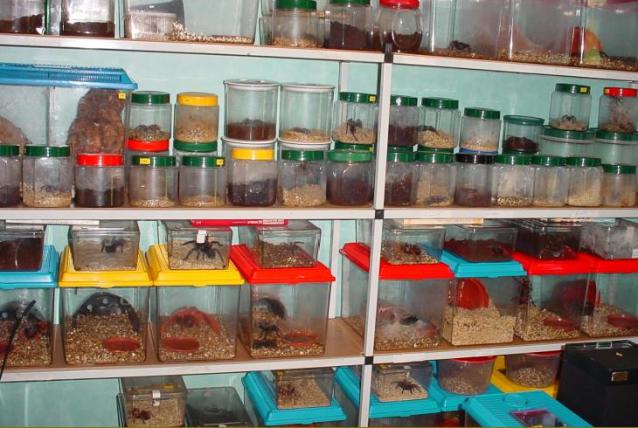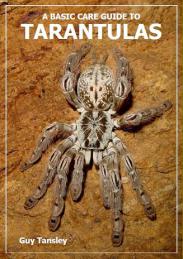
HOUSING
Before you actually buy your tarantula, its permanent accommodation has to be prepared. This means that the correct environment has to be constructed depending upon the type of spider you wish to own. Some form of heating and a suitable food source have to be arranged and if the tarantula is to be arboreal, then the tank must be of the correct dimensions, arboreal tarantulas rarely visit the ground so a taller tank is preferable but terrestrial species need more floor area. Fossorial species require custom-made tanks that allow them to construct their deep burrows but, as a guide, a good container size for most tarantulas is 12"x12"x12" but this size can vary according to the dimensions of the spider. A large species such as the Goliath Theraphosa blondi will need a larger area, nearer 24"x15"x12" to be comfortable. Although the aquarium is the most suitable form of housing for a tarantula, there are a lot of alternatives which will suffice. Different sizes of plastic boxes can be used as well as sweet jars provided they are stood in a heated area. Two or three tarantulas can be housed in a large tank by using dividers, but make sure these are very secure to prevent one spider climbing over, or breaking through to the other compartments. Spiderlings should be housed in smaller containers relative to their size. Too large a container and the spiderling will have trouble finding it's food and too small, growth rates may be restricted. Juveniles and sub-adults should also be housed in appropriate containers (see photos below for a more detailed view of container options).
Peat free
compost: This is probably the most widely used substrate by tarantula keepers as it is the ideal medium for burrow construction. It holds water well helping to maintain humidity and is pleasing from
an aesthetic point of view. This substrate can harbour mites and mould may be a problem but with regular housekeeping, this is minimised.
Vermiculite: Again, very popular as it is sterile, inorganic and light weight. Its high water holding capacity makes it ideal for the hot and humid environment of the spiders tank. Being inorganic,
mites aren't a problem. Tarantulas find it almost impossible to burrow into so this substrate should only be used in arboreal set ups or mixed 50/50 with compost.
Bark chips or cedar chips: These should be avoided as they promote mould growth and some types even give off fumes that may harm your tarantula. Spiders also find this substrate difficult to walk on
so although aesthetically pleasing to the eye, this substrate isn't much use.
Sand: Again, this should be avoided as it can soon turn messy and once damp, can be excessively heavy.
Most terrestrial tarantulas will burrow into the substrate but there is no evidence to
suggest that they cannot survive without them. A retreat should be provided however, to allow the spider a place to hide and this can be either a piece of curved cork bark placed in one corner
of the tank or half a flower pot resting on its side. Providing a deep substrate provides the perfect opportunity to observe burrow construction but the tarantula will remain hidden for most of the
time. Arboreal species will eventually conceal themselves in a sock-like web between suitable objects so a piece of cork bark should be provided and placed vertically against the tank wall to act as
a retreat (black card should be placed against the back of the container to restrict light as all tarantulas abhor bright light. Live plants should generally be avoided as they can fail to thrive
without the correct lighting (tarantulas don't require any form of special lighting) and more often than not, the spider will uproot these with it's digging habits. On the other hand, tank decoration
can be as elaborate as you wish. Large enclosures featuring waterfalls, special lighting and plastic or real plants make interesting displays too but remember that your spider may spend long periods
hidden from view and cage maintenance will be higher.
The tarantula tank doesn't need to be cleaned out every day but there will come a time when this needs to be done. The old substrate should be replaced and any decorations thoroughly cleaned. On a
daily basis food remains must be removed as these will attract mites and mould. The total elimination of mites is impossible so the keeper shouldn't worry until they reach infestation proportions.
Mites will always be present in the hot and humid environment of the tank but with regular cleaning and maintaining a clean cricket culture should keep them under control. Tarantulas are generally
clean animals and they will deposit their food remains (sometimes called a food bolus) and defecate in the same corner. The water dish should be cleaned and topped up regularly (see chapter on food
and water requirements).
Fossorial set-up, click here for information on building these tanks.
